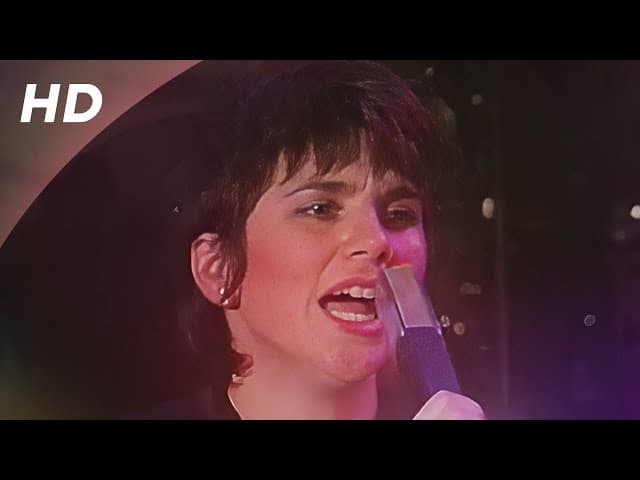
That Agonizing Sweetness: When Love’s Memory is as Vivid as its Loss
There are moments in music history when an artist, already a titan in their own right, takes a beloved classic and not only makes it their own but elevates it into an anthem for a new generation. In the spring of 1980, with her distinct and powerful voice, Linda Ronstadt did just that with her cover of “Hurt So Bad”. Released as the second single from her platinum-certified album, Mad Love, Ronstadt’s rendition soared onto the charts, peaking at #8 on the Billboard Hot 100 and #9 on the Cash Box Top 100. This late-career Top 10 smash arrived during a pivotal, rock-forward shift in her sound, marking it as her final solo Top 10 hit on the Billboard Hot 100—a poignant capstone on a phenomenal run.
The Genesis of the Hurt
The story of the song itself stretches back to 1965, when it was a Top 10 hit for the smooth, dramatic doo-wop group Little Anthony & The Imperials. Written by Teddy Randazzo, Bobby Weinstein, and Bobby Hart, the original was a towering ballad of teenage heartache. But Ronstadt’s take, arriving amidst the new wave leanings of her Mad Love album, stripped away the lush strings for a more raw, rock-infused energy. Produced by her long-time collaborator, Peter Asher, the song maintained the core emotional intensity while infusing it with a driving urgency reflective of the new decade. This version is perhaps the best-known and most successful of all the song’s recordings, testament to Ronstadt’s interpretive genius.
The Echo of Unrequited Love
At its heart, “Hurt So Bad” is a searing testament to unrequited love—that specific, agonizing pain of giving your entire self to someone who either can’t or won’t return it. The lyrics are pure, unadulterated heartbreak, painting a picture of someone who is so profoundly affected by a person that simply seeing them or thinking of them causes a physical ache: “I know you warned me / I had to watch you play with fire / But I didn’t listen / Because my heart was full of false desire.” It speaks to the universal folly of the heart—the decision to pursue a love despite clear warnings that it would only lead to sorrow. The phrase “it hurts so bad” isn’t just hyperbole; it’s the honest, gut-wrenching admission that the emotional blow is so immense, it feels like a wound.
For those of us who came of age in the 70s and 80s, Linda Ronstadt was the voice of our deepest, most complicated feelings. Her version of “Hurt So Bad” perfectly captured the dark side of devotion. It’s a song for reflective moments, perhaps late at night with a tumbler of something comforting, when memories of past loves and lessons learned start to surface. The dynamic power of her vocal performance—especially in those signature belts—transforms the hurt from a whisper of a ballad into a defiant cry. It’s the sound of a woman choosing to face her pain, to live in the full memory of a love that perhaps “never was,” because even that memory is more alive than any comfortable indifference. The fantastic guitar solo by Danny Kortchmar cuts through the track like a sharp flash of lightning, emphasizing the jagged edge of the emotion. This is not just a song; it’s a shared emotional experience, a brilliant piece of pop craftsmanship that still stings—and still comforts—today.